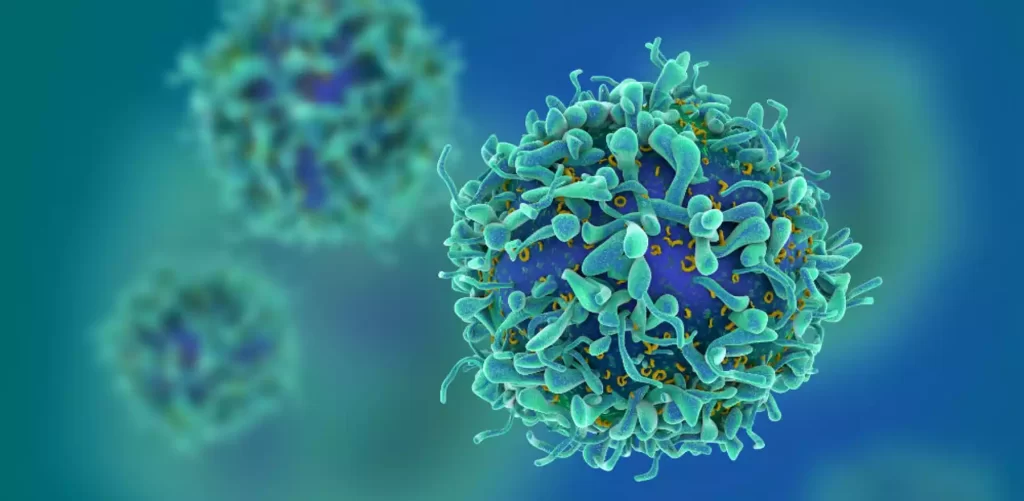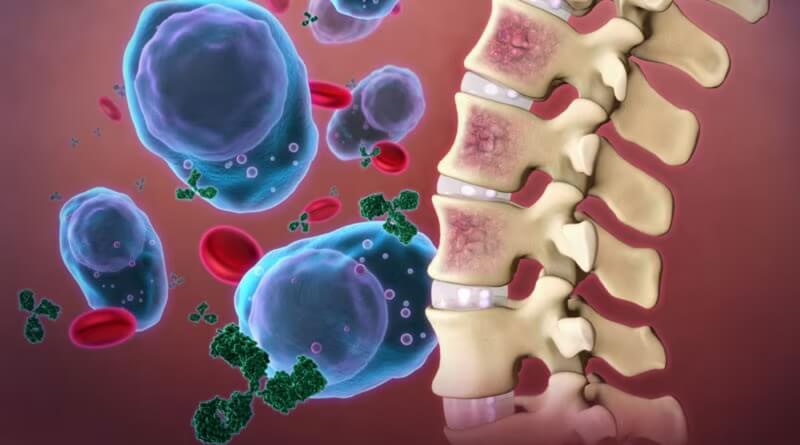MGUS and Multiple Myeloma involve abnormal plasma cells but differ in the severity and progression to cancer.
Monoclonal Gammopathy Of undetermined significance (MGUS) can be described as a very common disease in which the body produces abnormal blood-borne proteins which, in the majority of cases, do not cause symptoms. It’s usually harmless, but it could be able to develop into Multiple Myeloma (MM), an illness that affects the bone marrow.
MM can cause an overproduction by abnormally-formed plasma cells that can cause bone weakness kidneys, kidney disorders, and a compromised immune system. Contrary to MGUS, MM requires treatment.
Regular checks are essential for those suffering from MGUS to check for any changes in their condition, whereas MM typically requires treatments like treatment with chemotherapy or targeted medications and stem cell transplants. The early detection of MGUS and the proper treatment are crucial in increasing the outcome for patients with MM and MGUS.
What is MGUS?
Monoclonal Gammopathy of Unknown Relevance (MGUS) can be described as a frequent disease in which the body creates abnormal proteins, also known as monoclonal proteins or M proteins, within the blood.
They are created by plasma cells, which are a type of white blood cells. In MGUS abnormal proteins are typically found in blood tests by accident and aren’t a cause of signs or damage to the human body.

MGUS does not progress into cancer or trigger any health issues for the majority of people. Doctors must monitor those who suffer from MGUS since in some instances although very rare, it may be a precursor to a blood cancer called multiple myeloma and other ailments.
Regularly scheduled checks and monitoring help doctors monitor any changes in blood that may signal a progression into more serious illnesses, which will ensure prompt detection and proper treatment when needed.
What is Multiple Myeloma?
Multiple Myeloma (MM) is a form of cancer that attacks the plasma cells that reside in the bone marrow. Plasma cells are vital in aiding our bodies fight off infections however, in MM they develop abnormally and grow uncontrollably encircling normal blood cells.

This can cause problems such as weak bones that could cause fractures and pain as well as affect kidneys as well as weaken the immune system and result in anemia (low red blood cells). People suffering from multiple myeloma could be afflicted by symptoms such as bone fatigue, pain frequent catching infections, and occasionally kidney issues.
Treatment for MM typically involves a mix of therapies like chemotherapy-targeted medications or immunotherapy, as well as stem cell transplants. Monitoring and timely treatment are vital to preventing multiple myeloma and enhancing the quality of life of those affected by the disease.
Difference Between MGUS and Multiple Myeloma
Key differences between Monoclonal Gammopathy of Undetermined Significance (MGUS) and Multiple Myeloma:
| Characteristic | MGUS | Multiple Myeloma |
|---|---|---|
| Definition | Abnormal protein in blood, usually asymptomatic | Cancer of plasma cells in bone marrow |
| Symptoms | Often asymptomatic | Symptoms like bone pain, fatigue, infections |
| Risk of Progression | Low risk of progressing to cancer | Higher risk of progressing to cancer |
| Treatment | Usually does not require treatment | Requires treatment, such as chemo, immunotherapy |
| Diagnostic Criteria | Abnormal proteins in blood without symptoms | Presence of myeloma cells, bone damage, proteins |
| Impact on Health | Typically benign, low impact on health | Can lead to complications affecting health |
| Age and Occurrence | Common in older adults (>50 years) | More common in older adults, usually >65 years |
| Family History Influence | Can have a slight familial predisposition | May have a stronger familial predisposition |
| Prognosis | Generally favorable | Prognosis varies based on stage and treatment |
| Risk Factors | Age, gender, race/ethnicity, family history | Age, gender, race/ethnicity, family history |
SYMPTOMS OF MGUS
The Monoclonal Gammopathy with Undetermined Significance (MGUS) does not cause symptoms. Most people are in good health and don’t feel anything odd taking place within their bodies. The MGUS condition is usually discovered accidentally during blood tests conducted to determine other causes. In rare instances, there are individuals who may suffer symptoms like:
- Tingling or numbness, particularly on the feet or hands.
- Insufficiency or fatigue.
- Vision changes.
- In certain body parts, swelling like legs or ankles.
SYMPTOMS OF Multiple Myeloma
Multiple Myeloma (MM) may result in a variety of symptoms that could alter the way a person is. The most common symptoms are:
- Bone pain is common, especially in the hips, back, or ribs.
- Tiredness, weakness, or fatigue.
- Frequent fevers and infections.
- The possibility of bleeding or bruising is very common.
- Kidney problems can lead to changes in urination and swelling.
- Anemia is a condition that can lead to dry skin and a feeling of breath.
- Tinniness or tingling, especially on feet or hands.
Diagnosis and Prognosis
Diagnosis:
MGUS (Monoclonal Gammopathy of Undetermined Significance):
- Blood tests: Usually, MGUS is diagnosed incidentally by routine blood tests which reveal unusual M proteins (M Proteins) in blood.
- Electrophoresis as Immunofixation: Serum protein electrophoresis (SPEP) as well as immunofixation are utilized to detect and identify abnormal proteins in blood.
- The Bone Marrow Biopsy: In certain instances, a bone marrow biopsy can be taken in order to verify the diagnosis as well as determine the amount of plasma cells in the marrow.
Multiple Myeloma:
- Blood as well as Urine Tests: These tests are used to detect abnormal levels of substances (M proteins) as well as other indicators of myeloma multiple.
- Bone Marrow Biopsy: A look at a sample of bone marrow may determine the presence of myeloma-related cells and determine the stage of disease.
- Testing for Imaging: X-rays MRI CT scans or PET scans can help determine bone lesions or damage caused by multiple myeloma.
Prognosis:
MGUS:
- Excellent: Most of the time MGUS is not a pathological condition that can lead to cancer or create significant health problems. The prognosis for MGUS is generally positive and has a low likelihood of complications.
Multiple Myeloma:
- Varying Prognosis: The Prognosis for Multiple myeloma is based on a variety of variables, including its stage, general condition of health, the genetic causes and the responses to treatment.
- Survival Rates: Treatment advances have led to improved survival rates, with a lot of patients enjoying longer periods of remission, and a improved standard of living.
- Risk stratification: Tools for risk stratification aid in predicting the probability of progression of the disease and aid in making treatment decisions based upon the risk level of the patient.
Management and Treatment Strategies
MGUS Treatment
- Monitoring and Observation: MGUS isn’t often found to cause health issues or symptoms. So, doctors usually prefer a method that involves closely monitoring and observing the condition.
- Regular check-ups: People diagnosed with MGUS are subject to regular check-ups as well as blood tests to monitor any changes in blood protein levels, or other indicators.
- Customized Treatment: Doctors look at the risk factors and look for indicators of possible development. In the case of certain individuals who have particular risks or a higher risk regular monitoring may be suggested.
- No specific treatments: MGUS doesn’t require active treatment as it usually doesn’t develop into cancer or cause health issues.
- Health Care Providers Consulting: Constant communication with healthcare professionals is essential to solve any issues discuss the results of tests, and make informed decisions on the next steps if necessary.
Multiple Myeloma Treatment
Treatment for myeloma and multiple myeloma could differ depending in the degree of disease and the overall health of the patient as well as other personal factors. Treatment options include:
- Chemotherapy: Chemotherapy is the use of medications to kill cancerous cells or to slow their growth. A variety of chemotherapy drugs and combination drugs are used in the multi myeloma therapy.
- Anti-Immune Drugs: Lenalidomide as well as pomalidomide and thalidomide are frequently employed. They aid in the fight against cancerous cells and can also alter the microenvironment in which myeloma cell growth occurs.
- Corticosteroids: Drugs like prednisone or dexamethasone are used to reduce inflammation, kill myeloma cell lines, and enhance other treatment effects.
- Proteasome inhibitors: Drugs like carfilzomib and bortezomib as well as ixazomib inhibit the activity of proteasomes in myeloma cell and cause them to cease to function.
- Immunotherapy: Monoclonal antibodies like daratumumab or elotuzumab and many more can be utilized to focus on specific proteins found on the surfaces of myeloma cells, marking them to be destroyed through the immune system.
- Stem Cell Transplant: High-dose chemotherapy is commonly used prior to the transplant of stem cells in which healthy stem cells from a donor or patient are used to replace bone marrow cells that have been damaged.
- Therapeutic Targeting: Targeted Therapy: Drugs that address certain cancer-related abnormalities cells, such as kinase inhibitors and histone deacetylase inhibitors, are also used.
- Treatment with Radiation: This therapy uses high-energy rays that kill cancerous cells in certain areas, frequently used to ease discomfort caused by bone damage caused by myeloma.
- Assistance with Care: Patients also receive supportive care to help manage symptoms, prevent complications, and enhance their overall health. It could involve medications for pain, antibiotics for infections, and bisphosphonates that improve bone strength.
Risk Factors and Prevention
Risk Factors:
MGUS (Monoclonal Gammopathy of Undetermined Significance):
- Age: More MGUS-related issues are seen in people over 50, specifically those who are over 50 years old.
- Gender: Men have an increased chance of developing MGUS than women.
- Ethnicity: African Americans have an increased risk of MGUS when compared to Caucasians.
- Family Background: Being an immediate family member who suffers from MGUS or a blood-related disorder could increase the chance of developing.
Multiple Myeloma:
- Age: The risk of developing multiple myeloma rises with age, most commonly diagnosed in people who are over 65 years old.
- Gender: Men are slightly more likely to develop multiple myeloma than women.
- Ethnicity: African Americans are at greater risk of being a victim being at risk, followed by Caucasians and people who are of Asian descent.
- Genetics: The family background of myeloma, or genetic mutations may make it more likely.
Prevention:
There is no known method to ward off the development of MGUS also known as multiple myeloma. However, certain lifestyle practices could lower the risk or delay the development of certain blood-related disorders.
- Healthy Lifestyle Options: A well-balanced diet engaging in regular physical activities and abstaining from smoking and drinking can contribute to general well-being and could reduce the risk of acquiring various illnesses, including certain cancers.
- Regular health check-ups: Check-ups on your health regularly and screenings, particularly for people with a background or a family history of MGUS and multiple myeloma could aid in the early detection and prompt treatment.
- Knowing Risk Factors: Becoming aware of individual risk factors and discussing them with healthcare professionals can aid in monitoring proactive and the right interventions when needed.
- Participants of Clinical Trials: For those at greater risk, or with predispositions, taking part in clinical trials with the aim of prevention or early detection might be considered.
The good news about Multiple Myeloma
- Improvements in Treatment: Strategies Researchers have made huge progress in developing new treatments for the disease of multiple myeloma. Innovative medications, including immunotherapies, targeted therapies, and combinations of treatments have proven to be more effective in treating the disease.
- Higher Survival Rates: With the advancement of treatments and treatment strategies that improve survival rates for patients with multiple myeloma have improved gradually. A lot of patients are now experiencing longer intervals of remission as well as a higher quality.
- Personalized Medicine: The industry is putting more emphasis on individualized or precise medicine in myeloma therapy. The doctors create their treatments according to the individual characteristics of each patient like genetic profiles and specific disease markers which results in more specific and effective treatments.
- Clinical Trials and Research: Current clinical trials are investigating new treatments and combinations of treatments with the aim of improving results and eventually discovering cures for myeloma.
- Helpful Care Advances: In addition to advances in the treatment of the illness itself and improving the treatment process, there has been a significant improvement in the use of supportive care strategies that aim to manage symptoms, decrease the adverse effects of treatments, and improve the overall well-being of patients.
Summary
Monoclonal Gammopathy with undetermined significance (MGUS) causes harmless abnormal blood protein production with no symptoms. It is rare for it to develop into cancer. Multiple Myeloma (MM), is a blood cancer type that causes uncontrollable expansion of infected plasma cells which can cause bone loss kidneys, kidney issues, and an impaired immune system.
The symptoms of MM include bone pain, fatigue, and infections. Regular monitoring and early detection of MGUS are essential in identifying any possible progress. MM is treated with immunotherapy, chemotherapy, and occasionally stem cell transplants to manage the condition. Both of these conditions highlight the need for medical attention to manage the condition effectively and a better outcome.



